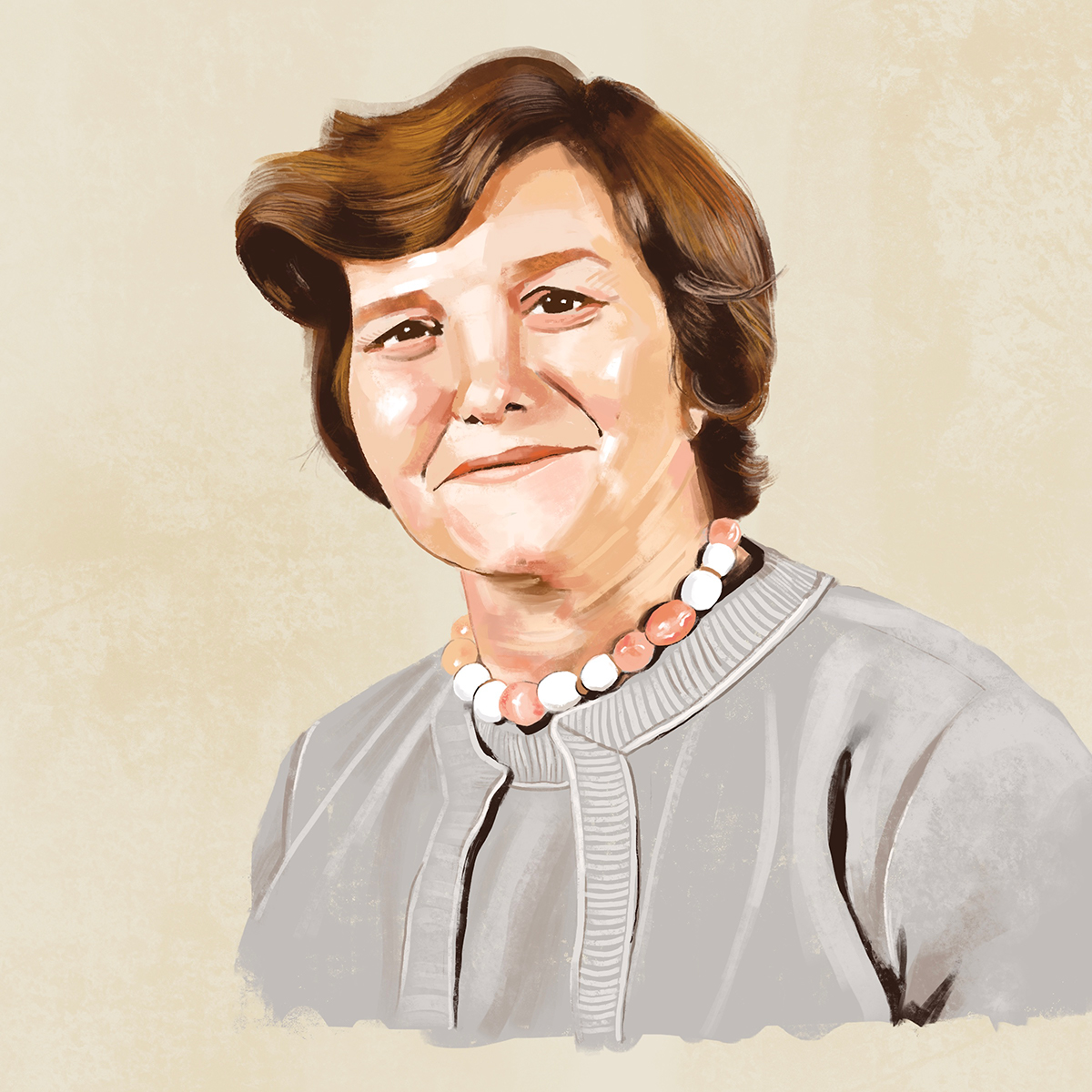
A Space of Her Own
Fall 2020
“It took one woman to invent a rocket thruster, and two men to invent Post-its.”
That was a Washington Post reporter’s take-away from an induction ceremony to the National Inventors Hall of Fame one decade ago.
Among the recipients that year: Arthur Fry and Spencer Silver, pioneers of the adhesive notepads; S. Donald Stookey, who developed the glass-ceramics we know as corning ware; and University of Manitoba alumna Yvonne Brill [BSc/45], the rocket scientist behind Patent No. 3,807,657—the electrothermal hydrazine thruster.
Launched in 1983, this propulsion system that became the industry standard helps to keep satellites from slipping out of their orbits. It was more efficient, cheaper and extended a satellite’s life.
Brill’s inkling was to reheat the ejected propellant, before leaving the nozzle.
The device was “a very simple idea,” her son, Matthew, was reported as saying. “Mom always felt fortunate that she was lucky enough to think it up.”
Former U.S. President Barack Obama took notice. Two years before Brill died at 88 from complications of breast cancer in 2013, she attended a White House ceremony to accept the National Medal of Technology and Innovation. More recently, the Faculty of Science, in its 50th anniversary year, honoured Brill posthumously with the first Memorial Award for Applications that Changed the World.
Ready to Launch
Brill was 10 years old, riding streetcars in downtown Winnipeg, when she would see students going back and forth from university. She, too, wanted to pursue a post-secondary education. Despite her high-school principal’s nudge to consider becoming a teacher, and her dad’s suggestion she open a small dress shop, Brill enrolled at UM to pursue physics, chemistry and math.
She would become the only female rocket scientist in the United States in the mid-1940s.
When a New York Times reporter penned Brill’s obituary, and neglected to first speak to her pioneering contributions, leading instead with a paragraph about how she made a mean beef stroganoff—and how she followed her husband from job to job, and took eight years off from work to raise three children—the Twitterverse fired back.
Would the writer have done so had Brill been a male rocket scientist? (In response, the mention of beef stroganoff was removed.)
During her notable career she worked on the first weather satellite, rocket designs for NASA’s missions to the moon, the Mars Observer, and the rocket motor for the space shuttle.
A scientist with a sharp wit, Brill was among the few women elected to the National Academy of Engineering, in 1987.
“I just kept pushing,” she once said. “I didn’t care whose shins I kicked.”






